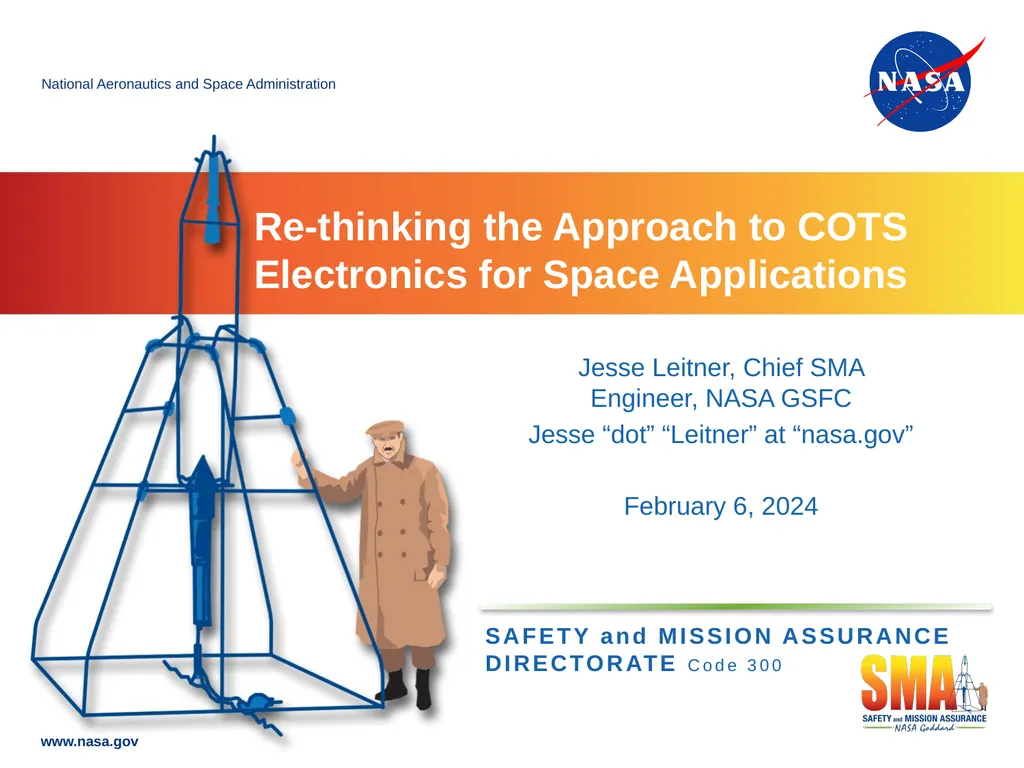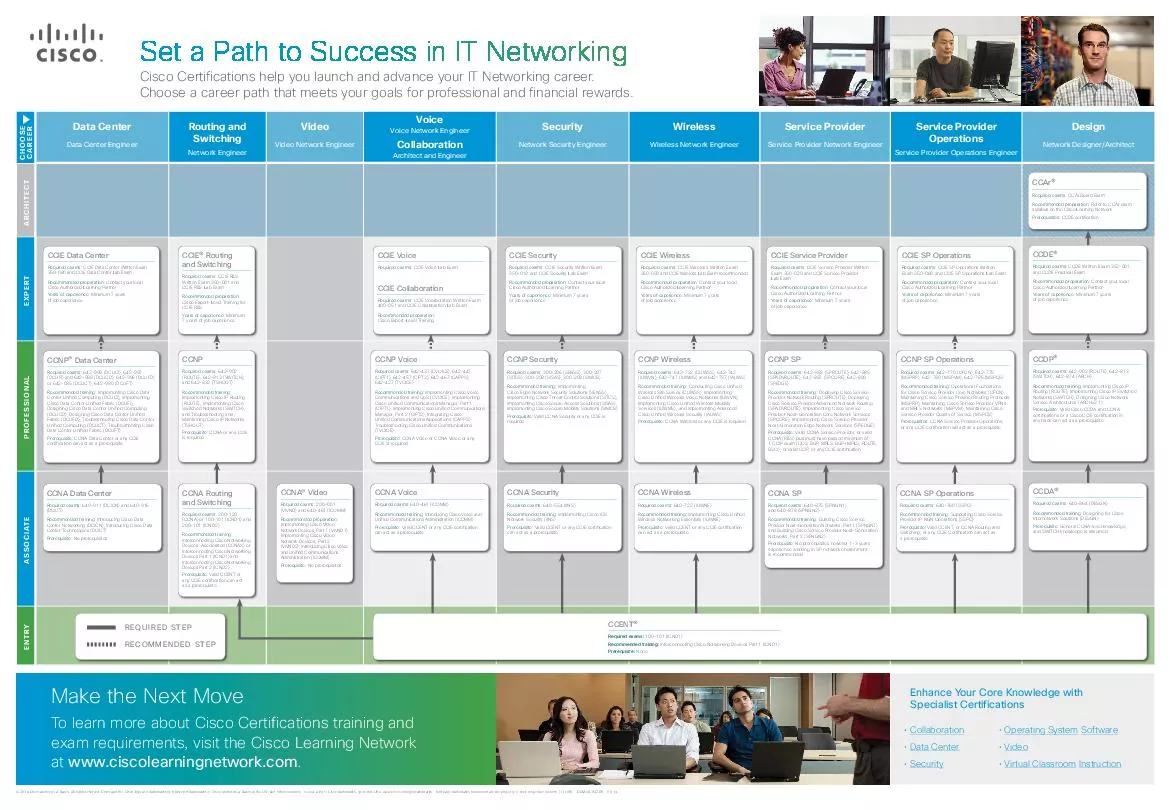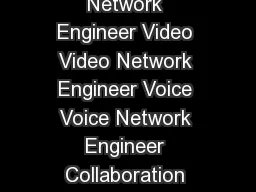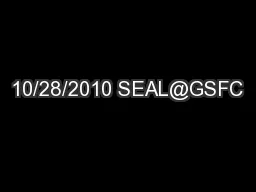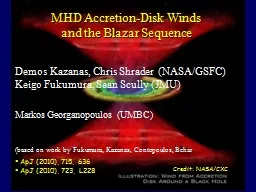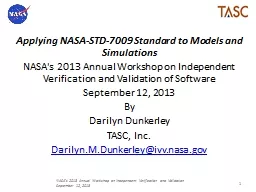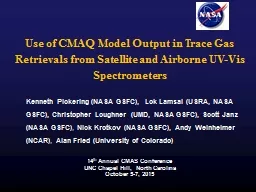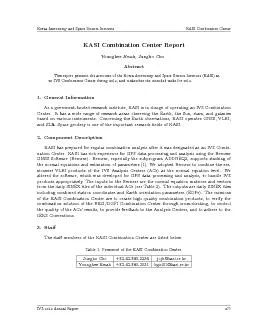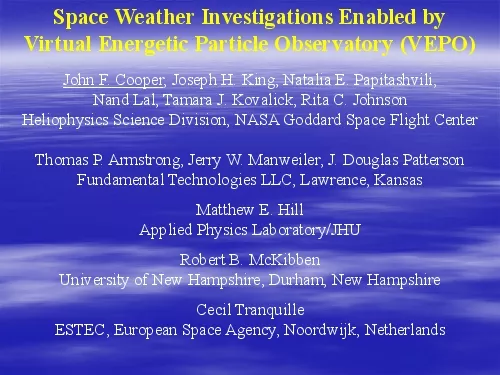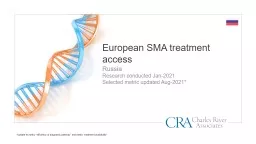Jesse Leitner, Chief SMA Engineer, NASA GSFC Jesse
Author : cheryl-pisano | Published Date : 2025-08-06
Description: Jesse Leitner Chief SMA Engineer NASA GSFC Jesse dot Leitner at nasagov February 6 2024 Rethinking the Approach to COTS Electronics for Space Applications Outline Current parts situation The Immediate Problem Current and
Presentation Embed Code
Download Presentation
Download
Presentation The PPT/PDF document
"Jesse Leitner, Chief SMA Engineer, NASA GSFC Jesse" is the property of its rightful owner.
Permission is granted to download and print the materials on this website for personal, non-commercial use only,
and to display it on your personal computer provided you do not modify the materials and that you retain all
copyright notices contained in the materials. By downloading content from our website, you accept the terms of
this agreement.
Transcript:Jesse Leitner, Chief SMA Engineer, NASA GSFC Jesse:
Jesse Leitner, Chief SMA Engineer, NASA GSFC Jesse “dot” “Leitner” at “nasa.gov” February 6, 2024 Re-thinking the Approach to COTS Electronics for Space Applications Outline Current parts situation The Immediate Problem Current and next-generation electronics approaches NASA-STD-8739.10 Overview The Dual-path update Three-option parts assurance COTS vs Radiation Low Risk radiation approaches PEAL overview 2 The world has changed The MIL-SPEC system was devised when there was limited manufacturing capability for electronics – there was little assurance that parts would work reliably Parts were designed prescriptively and quality metrics were established relative to the designs Since there were no established reliability or statistical process controls, we had to use extensive strict quality requirements to make sure that current products had minimal variability relative to previous products MIL-SPEC levels that involved progressively more testing, higher sample sizes, and more stressing testing were introduced Since then commercial manufacturing capability with statistical process controls and high-volume production dwarfed and far surpassed the MIL-SPEC system. With high-volume and statistical process controls, reliability now can be established directly NASA and DoD did not recognize the advanced capability of the commercial sector and demanded additional screens to be applied to parts to try to make them mimic MIL-SPEC parts and hopefully screen in quality and reliability Documentation stated (with limited justification in specific contexts) that higher levels equated to higher reliability, but actually quality was conflated with reliability in general As technology evolved, the MIL-SPEC parts could not keep up Attempts to apply MIL-SPECs to noncompliant parts became more futile as part technologies have evolved 3 MIL-SPECs, by definition, fundamentally limit technology The broad environmental ranges required and the ability to tolerate many forms of overtest (inherently a derating), drive firm “catalog limits”, which have been in place since inception There are not and will not be well-defined “parts categories” to cover many new classes of electronics technology ”Special drawing” parts (e.g., from GSFC or DLA) extend the range, but current needs have already surpassed performance limits, they involve huge costs/lead times/MOQs, and are small batch builds The use of MIL-SPECs to accept and qualify COTS parts conflicts with many of the premises of COTS parts MIL-SPECs involve many test levels that are not based on the actual manufacturing processes or application use of the parts COTS parts are optimized to levels laid out in their data sheets, which would very often be different from MIL-SPEC testing
